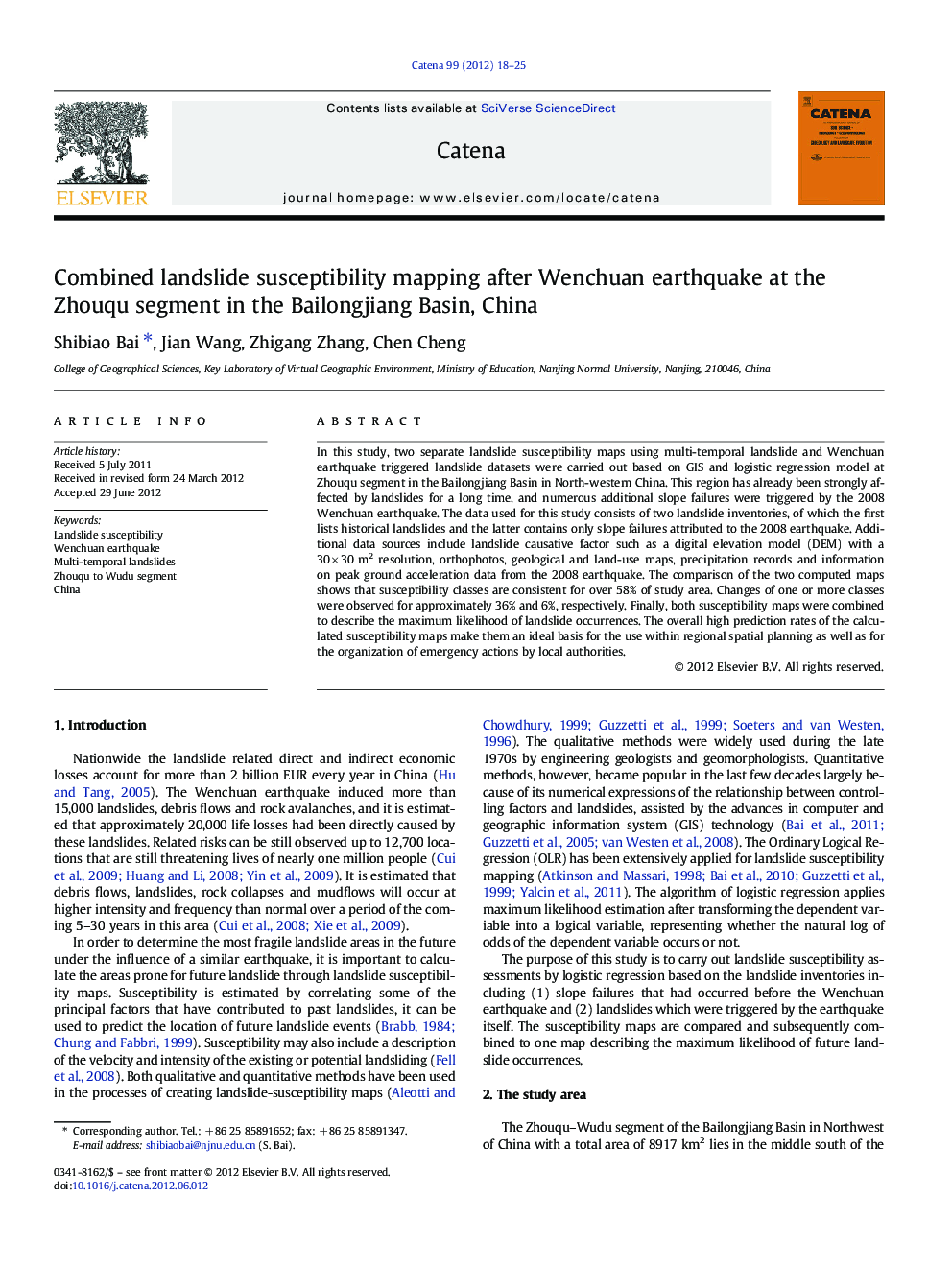| Article ID | Journal | Published Year | Pages | File Type |
|---|---|---|---|---|
| 4571802 | CATENA | 2012 | 8 Pages |
In this study, two separate landslide susceptibility maps using multi-temporal landslide and Wenchuan earthquake triggered landslide datasets were carried out based on GIS and logistic regression model at Zhouqu segment in the Bailongjiang Basin in North-western China. This region has already been strongly affected by landslides for a long time, and numerous additional slope failures were triggered by the 2008 Wenchuan earthquake. The data used for this study consists of two landslide inventories, of which the first lists historical landslides and the latter contains only slope failures attributed to the 2008 earthquake. Additional data sources include landslide causative factor such as a digital elevation model (DEM) with a 30 × 30 m2 resolution, orthophotos, geological and land-use maps, precipitation records and information on peak ground acceleration data from the 2008 earthquake. The comparison of the two computed maps shows that susceptibility classes are consistent for over 58% of study area. Changes of one or more classes were observed for approximately 36% and 6%, respectively. Finally, both susceptibility maps were combined to describe the maximum likelihood of landslide occurrences. The overall high prediction rates of the calculated susceptibility maps make them an ideal basis for the use within regional spatial planning as well as for the organization of emergency actions by local authorities.
► Zhouqu segment landslide susceptibility based on GIS and logistic regression was applied. ► Two separate landslide susceptibility maps were carried out pre and post Wenchuan earthquake. ► Both susceptibility maps were combined to describe landslide occurrences' maximum likelihood. ► Integrated susceptibility map can be used for land planning and precautionary emergency planning.
